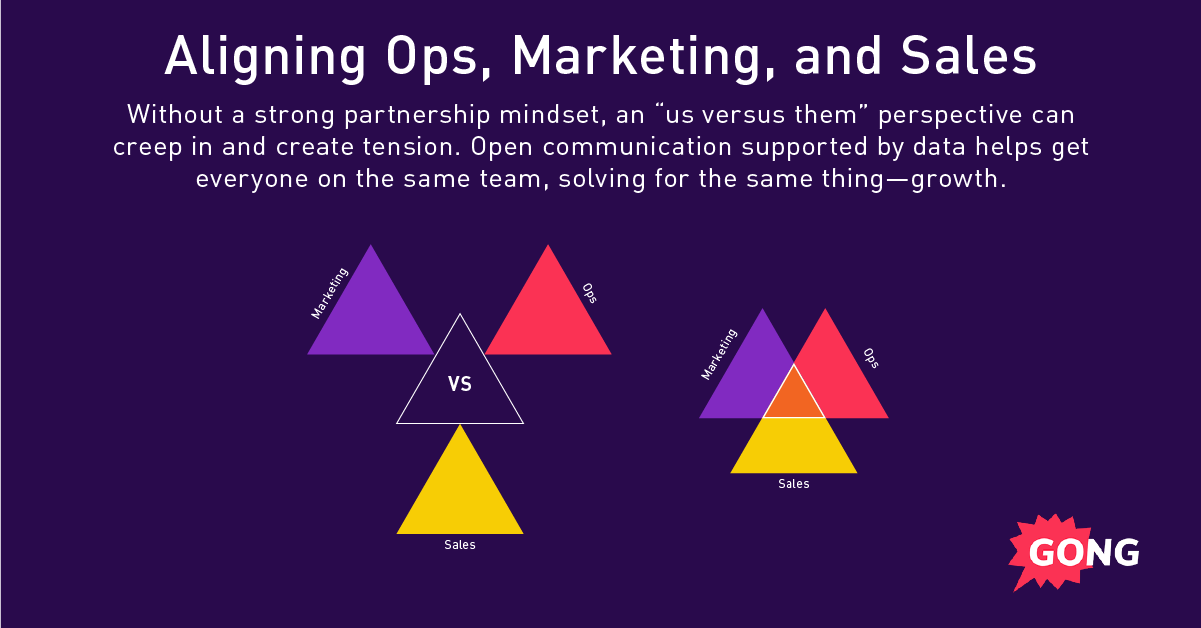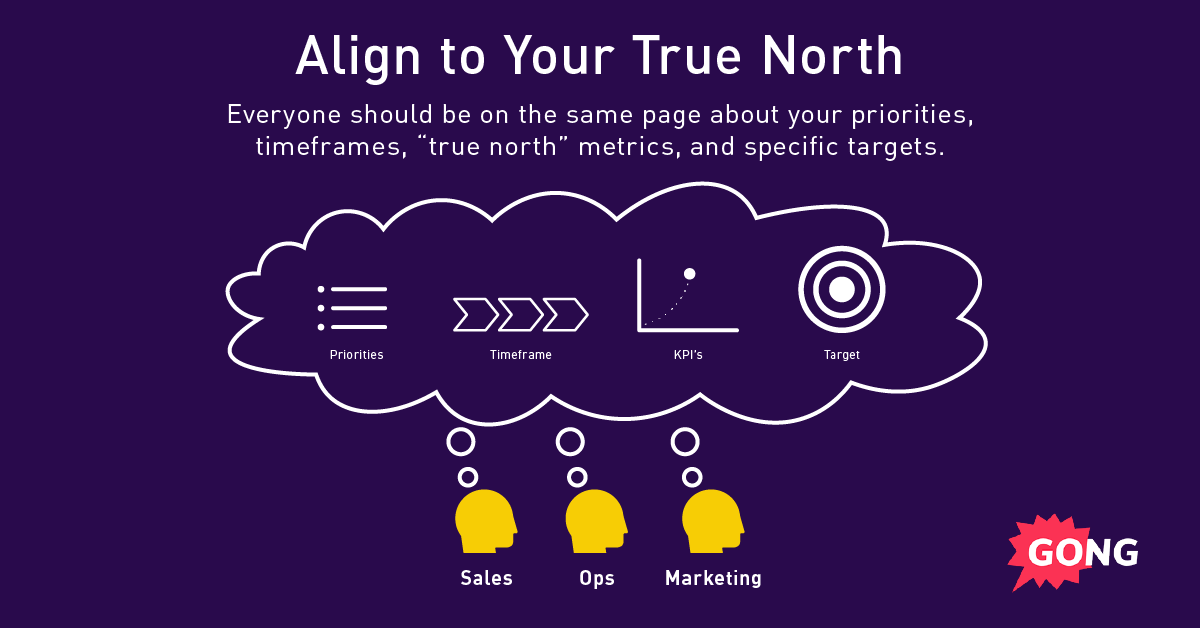Lehka Doshi: Building Alignment to Drive Growth
How has alignment contributed to LinkedIn’s success?
Why has it been critical for scaling their SDR org of over 350 reps?
What metrics should you focus on?
On a recent episode of the Reveal podcast, we connected with VP of Global Operations at LinkedIn, Lehka Doshi, for answers to these and other questions that are top of mind for revenue leaders.
Here are the key takeaways and highlights from that episode.
Focusing on Cultural Fit
Trying to interview for cultural fit is always a hard thing. And you might also fall into the trap of your own internal biases, because the natural way to actually get folks that have a good cultural fit is to get referrals from people within our own company.
So that is actually something that I struggle with as I’m thinking about growing my team and getting folks from a variety of different backgrounds. The bar for getting the culture fit piece right during an interview process is actually really hard. Once folks get to LinkedIn, it’s actually pretty easy. But the cultural value piece is really hard. You have to make some talent decisions pretty quickly based on what you see.
One of our tenets is “relationships matter.” And so one of the things that we encourage all our new employees to do in the beginning is, rather than just onboarding on the stuff that you need to learn to get up to speed on your day-to-day work, is actually spend some time just meeting people. Because relationships do matter, and you’re going to get a lot done that way. And also it’s a good way to onboard on, “How do we operate here? What are the cultural values?” If you spend that time investing in relationships, you can get that done.
It’s really hard not to get behind our [LinkedIn’s] vision of creating economic opportunity for every member of the global workforce. It’s pretty inspiring.
Alignment First, Data Second
I think before you start with the hard numbers and the data, just getting to a place of, “Can we align on the key question?” In other words, the problem statement that we’re trying to solve for. I would say that’s usually 50% of misalignment issues.
So starting with that is half the journey. And then after that, it’s really explaining how you see the world and having data support it, not necessarily lead your decision-making. And then understanding and listening to how others also see the world.
Developing a Data-Driven Culture
LinkedIn invests in something called Data-Driven University. DDU for short. Actually, it’s a grassroots program that we created at LinkedIn started by a bunch of employees…and they created this two to three day training. The curriculum is developed by other LinkedIn employees. And it’s trained by LinkedIn employees, fellow peers, that have a very strong data-driven background, usually they’ve had either consulting training or come from a function that uses a lot of data. And they train employees of a certain level and above.
It’s a great investment, and you learn how to think logically or break down problem statements into decision trees or assertion trees. How do you think about data? How do you analyze data? How do you glean insights, and how do you communicate it?
It’s a huge investment that LinkedIn makes. But it helps because as a result, you have all of these folks throughout the organization of a certain level that are making decisions day-to-day that have gone through that program. There’s this common language that they’re speaking. So when you’re in a meeting, you might crack a joke like, “Ha! As we learned in DDU, this is how we should probably think about it, or this is one way to think about it.”
When you have hundreds of people, there’s always going to be some folks that are not meeting the bar. So, actively coaching and performance managing [is important] so that you are meeting that bar consistently for all lines of businesses and all reps.
Data Breakout—Align Your Sales Team
CSO Insights asked sales leaders how they planned to achieve their goals of increasing revenue attainment. The number one response? Better lead generation.
And that means sales development teams are going to get the spotlight, and alignment is a crucial part of their success. Because according to their responses, only about one-third of sales leaders said they have a formal process when it comes to how they hand off leads between Marketing and Sales. That means two-thirds either have an informal process, or no process at all!
To double down on the importance of SDR alignment—both organizationally and inside the department—SalesForLife found that the makeup of sales development teams are scattered:
- 17.1% are inbound.
- 28.8% are outbound.
- 54.1% are a blend of both.
These variances in go-to-market conversations and subteams is another important concept to consider when aligning your team. They all need to be prepared with scenario-specific messaging that’s also a cohesive overarching message. Easier said than done, and these insights reflect that it’s a major concern and focus for leaders in 2020.
Aligning Operations and Sales
So you cannot be successful in Operations without a strong partnership with your cross-functional partners. And I think it starts with a mutual understanding that you guys are solving for the same thing.
And so with Sales, it’s, “We’re solving for growth. And we’re solving for making sure that the assets that we have, whether it be our budgets or headcount, are allocated in a way that’s efficient so that we can hit our growth targets or actually exceed them.” So having that mutual understanding like we’re on the same page. We might see things differently to get to that end goal. But as long as we’re on the same page, that clears the air for a lot of things.
Open and honest communication has been really important too. I sometimes feel that Ops versus Sales, or Ops versus Marketing, or Sales versus Marketing—there could be tension, but it’s not necessarily communicated. That actually can get in the way of a lot of progress. And so open communication that’s supported by data, that’s supported by this notion that we’re on the same team. And this is what I’m seeing, and it’s not getting us to our growth numbers. And we’re both trying to strive for growth, so let’s talk about what’s going on here.

Using Data to Make Better Decisions
If you think about it, for most companies, Sales is the most expensive line item on their P&L. And so if you need to ensure that you’re effectively using those resources and those investments, you need to be able to have a very strong operations and analytics function (and access to data with Revenue Operations software) to ensure that you’re actually getting the most ROI out of that function. And you’re ensuring that you are allocating resources in the right way.
Do you have the right support resources for your sales organization? Do you have the right salespeople in the right markets? Do you have the right salespeople working on the right products? Those are questions that only you can really answer with data, and that’s what an Ops function does. So I think more and more companies are starting to realize that, and the value of that thought partnership with Sales, and with Marketing, and investing more into [Ops].
A lot of the mistakes that I think global leaders make is just taking the North America playbook and porting it over. It’s a pretty bad mistake. It’s so easy to do, given that [the U.S. and Canada] as a region has one language for the most part, similar cultures…so, it’s natural to go, “We got this to scale, so let’s scale it even further.”
The Growing Role of AI
In Operations, we’re looking at a ton of data. At LinkedIn, we look at even more data because we sit on top of a lot of data as well, which is so much fun and so great, and it makes us much more productive.
But, there’s a lot that we could be doing faster with things like AI. So for example, forecasting—we actually do a good job at LinkedIn at forecasting, especially with our subscription businesses. We’re very proud of that. But it takes a lot of time, and a lot of work. And it’s done on a daily, weekly basis.
How cool would it be if we can just have AI tell us where they see us going? It’s super important to get the forecast right, because that helps us drive to where we need to be next quarter, a year from now, whatever it may be. So we still have to do it. But it would be awesome to have AI do some of that.
Find Your True North
I think it starts with understanding your priorities as an organization. [It’s more than], “Oh yeah, let’s hit our growth numbers or revenue numbers.”
What are our priorities in a certain timeframe? And based on that, what is your “true north” metric? And being really crystal clear on that. And then from that, making sure that you have alignment across the organization, and also have set clear targets.
Getting the metric right is more important than anything. And getting that right up front and setting targets up front—super important to drive your priorities. Figure out what your priorities are and then make sure you’re tracking progress (find out more about sales tracking software).

Subscribe to Reveal: The Revenue Intelligence Podcast
Every week, we interview senior revenue professionals who share their insights on how they leverage revenue intelligence to drive success and win their market.
You’ll hear how modern go-to-market teams win, close revenue with critical deal insight, and execute their strategic initiatives—plus all the challenges that come along with it.
Listen now at gong.io/podcasts.